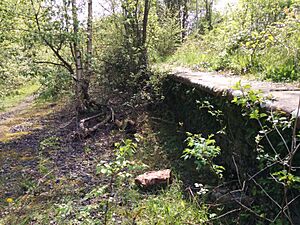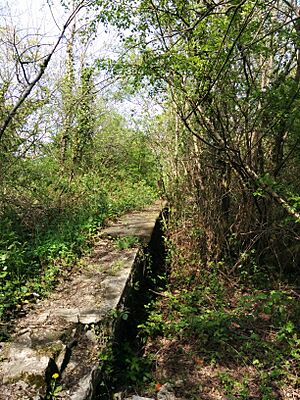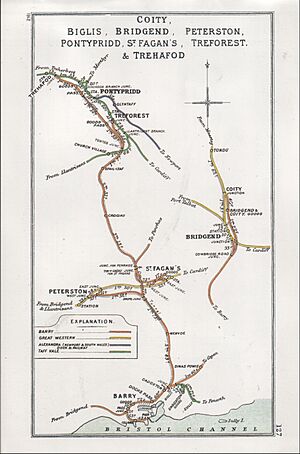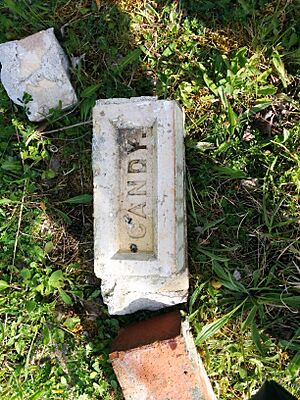Efail Isaf railway station facts for kids
Quick facts for kids
Efail Isaf
|
|
|---|---|
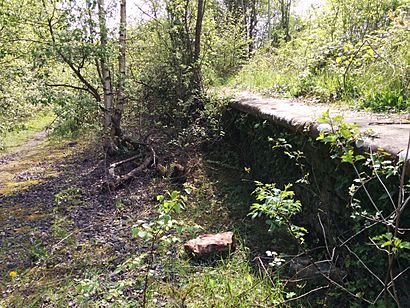
Abandoned platform of Efail Isaf station, facing west
|
|
| Location | Efail Isaf, Rhondda Cynon Taf Wales |
| Coordinates | 51°33′25″N 3°18′58″W / 51.5569°N 3.3162°W |
| Platforms | 2 |
| Other information | |
| Status | Disused |
| History | |
| Original company | Barry Railway |
| Pre-grouping | Barry Railway |
| Post-grouping | Great Western Railway |
| Key dates | |
| 16 March 1896 | Station opened |
| 10 September 1962 | Station closed |
Efail Isaf railway station was once a busy train stop in south Wales. It was located in the village of Efail Isaf. This station was part of the Barry Railway line. This important railway connected towns like Tonteg and Wenvoe. It ran generally north to south through an area called Creigiau.
Contents
History of Efail Isaf Station
The railway line that Efail Isaf station was on first opened for goods trains. This happened on 18 July 1889. Goods trains carry things like coal or products, not people.
When Passengers Could Ride
Even though the line was open, people couldn't ride trains on it right away. Passenger services started later, on 16 March 1896. Efail Isaf was one of the new stations that opened on that very day. This meant people could finally travel by train from Efail Isaf to other places.
When the Station Closed
Sadly, the station and the railway line closed to passengers many years later. The last passenger train left Efail Isaf on 10 September 1962. After this date, no more trains stopped there to pick up or drop off people.
What the Station Looked Like
Efail Isaf station had a special layout. It had four railway lines in total. Two of these were "through lines." This means trains could pass straight through without stopping. The other two lines had platforms next to them. These platforms were on the outer edges of the station.
Today's Remains
Today, the platforms are still there. You can even see the foundations of the old station buildings. In some spots, you might even find the original floor tiles! A public footpath now runs where the tracks used to be. This lets people walk through what was once a busy railway hub.


